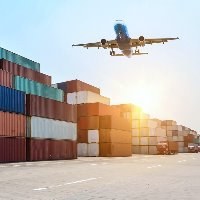(BRUSSELS) – The European Commission set out plans Tuesday to shift transport of goods from road-only to use of two or more transport modes, aiming to make freight transport more sustainable.
The proposal updates the current Combined Transport Directive and completes the Greening Freight Package.
During intermodal transport operations, one loading unit, such as a container, is moved via a combination of lorry, train, barge, ship or plane. Combined transport is a sort of intermodal transport combining the flexibility of road transport, which would still be used for the first/last leg of a journey to ensure that any location in the EU can be reached, with the environmental performance of rail, inland waterways or short sea shipping for the main leg of the journey.
Today’s revision will make intermodal transport more efficient and competitive, says the Commission. It refocuses support on operations that reduce by at least 40% the negative externalities compared to road-only operations between the same starting and end points. Digital platforms established under the electronic freight transport information Regulation (eFTI) will provide a calculation tool allowing transport organisers to prove whether their operation is eligible for support. They will submit the necessary information in an accessible manner; accredited digital systems will do the rest.
Alongside existing regulatory measures, the proposal introduces an exemption from temporary driving bans, such as weekend driving bans for combined transport. The aim is to improve the use of terminal and other infrastructure capacity by allowing trucks carrying out the short feeder legs to reach terminals as and when they need to, based on train, barge or ship departure times.
The proposal sets EU Member States a competitiveness target to reduce by at least 10% the average door-to-door cost of combined transport operations within 7 years, and requires them to put in place the policies needed to achieve this. A new EU gateway for intermodal transport information will provide links to all Member States’ national policy frameworks, as well as practical information on measures in place, increasing the transparency of national measures.
Terminal operators will also be required to provide minimum information on their websites on the services and facilities at their EU transhipment terminals.
The proposal will now be considered by the European Parliament and the Council in the ordinary legislative procedure.
Combined Transport Directive - guide



